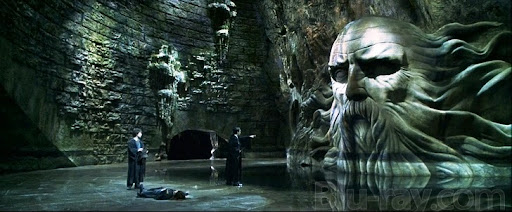BY JOHN CARTER JR
Hot take, Harry Potter and the Chamber of Secrets is the best film in the series. Being the second film and last Christopher Columbus entry in the franchise, the film is a standout for its world-building, establishing aesthetics for the series, and for expansion of horror elements from the original. Each Harry Potter installment seems to increase the intensity of the drama, mystery, and fear with every entry.
While it would be fair – and correct – to argue that the Prisoner of Azkaban was the starkest shift in franchise history in terms of intensity and tone, Harry Potter and the Chamber of Secrets did this first, coming off the heels of The Philosopher’s Stone. What makes this film stand out, in particular, is the idea of fear and looming dread. Everything in this near-murder mystery film is set to an hourglass that is quickly running out of sand.
Harry Potter and the Chamber of Secrets was released in November of 2002, almost exactly one year after the original. The film did well, grossing the second most at the box office for that year, behind only Peter Jackson’s The Lord Of The Rings: The Two Towers. The film is set the following year after the Philosopher’s Stone. It begins with Harry escaping from the Dursley’s house and meeting a house elf named Dobby. After meeting the new defense against the dark arts teacher on Diagon Alley, Harry returns to Hogwarts and is soon thrust into the mystery of the Chamber of Secrets and who this mysterious Tom Riddle character is from the past.
With each clue uncovered, Harry and his friends inch closer and closer to the heart of fear at Hogwarts School of Witchcraft and Wizardry. As time passes on, more becomes at stake as a slithering monster makes its way from the depths of the school. Can Harry save Hogwarts, his friends, or even himself?
The film is heavily influenced by breaking the rules, with each rule-breaking increasing in intensity. In the beginning of the film, Harry leaves his room when he is not permitted to. The bars are ripped literally from his window as he escapes even though he is not allowed back at Hogwarts by his uncle. Harry then breaks another rule by stealing a magic car (breaking magical law) and crashing it into a tree. The golden trio then brews polyjuice potion and goes into the girls’ bathroom, and so on. Whether fair or otherwise, this breaking of rules is among the way the film expands upon the shenanigans of the first.
The characters’ willingness to break the rules throughout the film allows scenarios that otherwise wouldn’t be possible to set up, allowing more scary and intense situations to occur. For example, the aforementioned car scene. The Whomping Willow Harry and Ron crash into is a dangerous creature. Entering the Forbidden Forest was another example of this. While their rule-breaking had led them to a meeting with Aragog, it also put them in a fearful and compromising position.

This ends up leading to the ultimate Act of rule-breaking in this film where the boys enter the girl’s bathroom to get into the Chamber of Secrets. Each environment is crafted perfectly for the needs of the scene, and we begin to see a gradual increase in environmental fear as the film gets further along into its lengthy 116-minute run time.
Throughout the film, pieces of lore are dropped at various moments and each time a new discovery is made, the gravity of their circumstances comes closer into focus. Hagrid’s relationship with the spider in the Forbidden Forest, Professor McGonagall giving a lesson about the Chamber of Secrets, Tom Riddle and his diary, Moaning Myrtle and the circumstances surrounding her death, Dobby’s mysterious warnings, all of these things and more establish an environment of fear and mystery.
Each of the actors involved in these scenes, along with the sets that they appear in, are perfectly crafted to elicit the fear needed at the time. This allows for a gradual build-up of fear throughout the film and eventual confrontation with it. Take a comparison between the Minerva McGonagall scene in the classroom versus Harry meeting Tom Riddle in person. In the scene with McGonagall, the students, while hearing a horrible story, have some semblance of safety being with a powerful teacher and being in the confines of a normal space, their classroom.


On the other hand, the scene where Harry meets Tom Riddle in person, the set is adorned with many green snakes in a dark and damp dungeon with a wicked-looking effigy of Salazar Slytherin at the end of the dungeon. All the while, Tom Riddle at first looks eerily normal, handsome, and calm. This scene sharply contrasts with the last as its fear can be found in the environment and in Tom.
Harry Potter and the Chamber of Secrets is the best film in the franchise for the way it improves upon the world established in the original, The means by which characters and sets are used to create increasing tension and the means by which the film tackles the mysterious fear behind the Chamber and Tom Riddle himself.
The film feels like a beautiful blend of dark and colorful accents connecting both the first and third films not only in tone but aesthetically as well. The way in which the film increases in fear and dread over time is almost a microcosm for how the entire series overall ends up playing out. When looking back, this allows not only an ability to feel nostalgia for a much simpler or safe time but also reminds us of the evil we have already overcome.
I give Harry Potter and the Chamber of Secrets a 9 out of 10 Basilisk fangs for its characters, world-building, and increasing fear.


You must be logged in to post a comment.